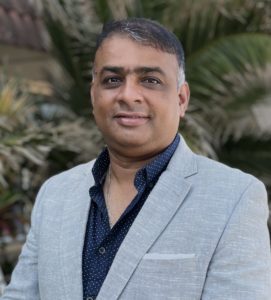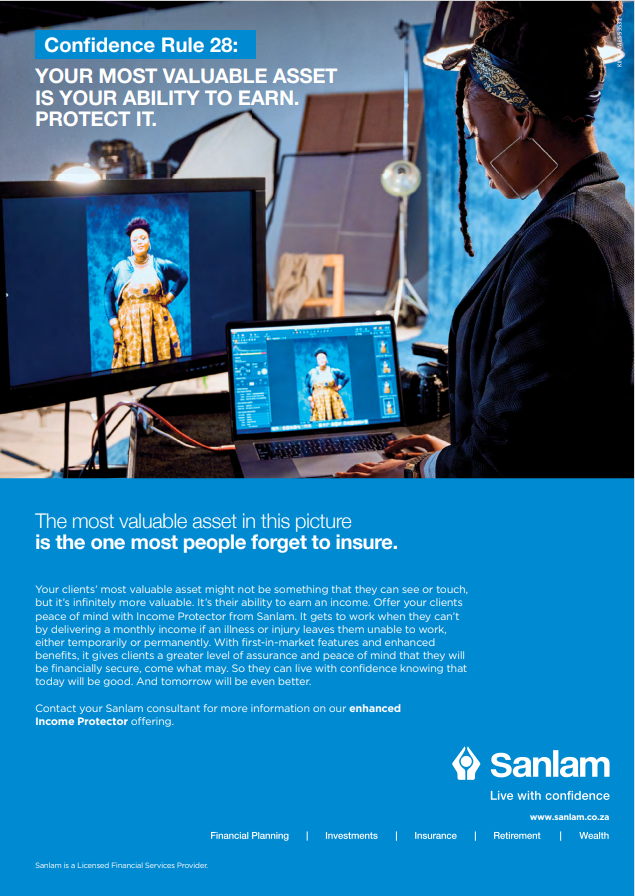Lushan Enoch, Sanlam risk specialist, talks to COVER about the importance of having an Income protection policy

Tony: Income protection, especially over the last few years, has really come to the fore, with many people realising how important it is to have it for those periods when you can’t do the work that generates your income. What has been Sanlam’s experience with this over the past few years?
Lushan: If there is one thing that this pandemic has done, it is to shine a spotlight on just how important it is to have some form of income protection in place. Since the start of this pandemic, we have seen a large increase in claims, particularly in the medical sector and health services professions. And, of course, that spilled over into really the entire book over the last two years. Just to try and quantify that a bit, if we look at January to December 2020, we paid R29.25 million in sickness claims for being booked off from work due to Covid-19 alone.
Tony: In other words, the experience has been quite different from the past, which means people have benefited from the fact that they had income protection over this difficult time.
Lushan: We have seen a large uptake from an income protection perspective, particularly since we made changes to our product. We have had some nice enhancements that took place during the period of March to April last year. I think that has helped to refocus clients on exactly how important income protection is. Then going into just a little bit of detail around the product, we took things that were a choice for the client, and we packaged them together, like when you buy a luxury vehicle. Instead of having to add on separate things like climate control and heads up display, Sanlam put this all together in the new income protection product.
Tony: If you’re looking at the need for income protection, especially over this period, what would you say were the specific reasons people took up income protection?
Lushan: When looking at life insurance, it really is a grudge purchase in the industry. Unlike things like medical insurance, where you know people come to intermediaries looking for medical aid, generally, people shy away from life insurance. However, the pandemic spotlighted the need to have something in place, because people were getting ill, and they were booked off work for long periods of time. And, of course, the longer you are away from work, the greater the impact on your ability to earn an income.
Now, people who are in employment have sick days and sick leave available to them. But of course, for those who are business owners or self-employed, there’s no such thing as sick leave. You don’t work, you don’t get paid. I think that really was an eye opener for a lot of people, highlighting the need to have something in place to take care of those instances when you cannot work.
Tony: Most people look at income protection from a disability and temporary disability perspective. Because they’re healthy, they don’t expect to need income protection. And yet, through this period, disability played a very small role; it was about illness.
Lushan: Most definitely. In fact, if one looks at 2019 and 2020 from a claim’s perspective, we paid 60% more income protection claims in 2020 as compared to 2019. So, it’s a considerably higher number of payouts from an income protection perspective.
Tony: Now comes the crux of the matter. We need more people to benefit from income protection insurance. Are we, as an industry and as financial advisors, doing enough to get people to understand the need for this category of insurance?
Lushan: There are three parts to that question. We’ve seen a great move in the industry to sharpen pencils and to get a product set that speaks directly to the needs of clients. Speaking from a Sanlam perspective, we have been working on our income protection suite to make it more relevant from a client perspective, trying to remove some of the intricacies of the product by making it a packaged deal.
So, you don’t lose anything because you forgot to add that benefit to the product. We have simplified it from that perspective and have been out on a campaign to let the public know of the offer that we have. But, in many instances, we are dependent on our intermediaries. The sad reality of it is when one looks at the True South Gap studies, that gap between what people need and what they have in place is getting much larger. In fact, I was just looking through some of the stats towards the end of last year and I think the last gap study tells us that we are R19.3 trillion under-insured, and that’s only from a disability perspective.
Tony: That seems like a massive opportunity for the industry in terms of business and for financial advisors. Because, as an advisor, you have that responsibility to make sure that the client is looked after. If you haven’t got income protection as part of the portfolio or if you haven’t at least offered it to the client, then your service is not complete.
Lushan: Exactly. And then the third part that I mentioned, from a client financial behaviour perspective, people get excited with big potential sum assureds. If you say to somebody, I’m going to give you a million-rand disability cover, that sounds very appealing as compared to saying to somebody, we can give you R15 000 a month worth of cover for disability.
What people tend to ignore is that it’s R15 000 a month over your potential working life, all the way up to retirement. And, yes, we understand that lump disability or permanent disability is not something that everybody will experience, but because of the large cover amounts, people are drawn to purchasing that. We need to get people into a place where they understand what the impact is of being temporarily disabled for a period. In fact, research was done a few years back that demonstrated one was 40 times more likely to be temporarily disabled than permanently.
I think if you just look at those steps, and the probability being 40 times higher, that’s what you need to protect against.


